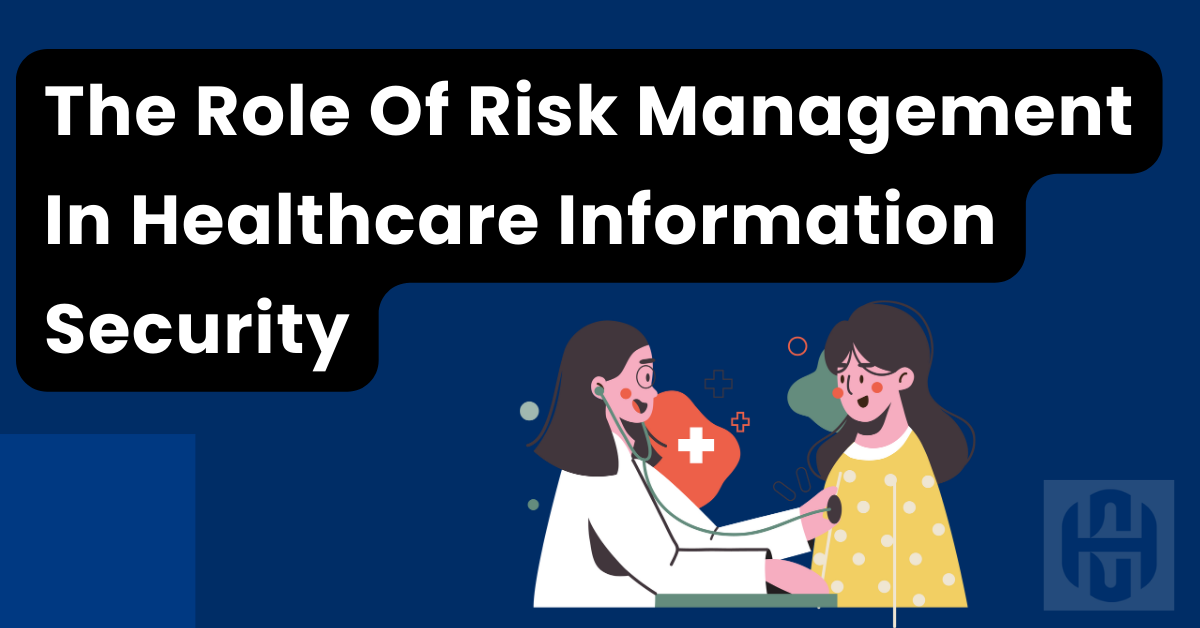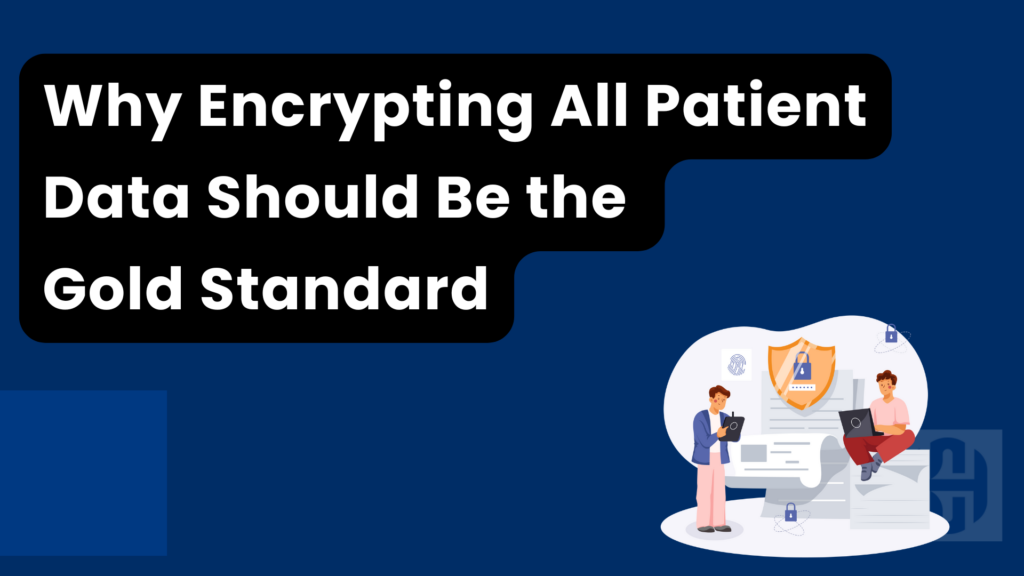Introduction
In today’s digital age, healthcare organizations face numerous threats to their information systems. The increasing use of electronic health records (EHRs) and other digital tools has made healthcare data a prime target for cyberattacks. Effective risk management is essential to protect sensitive patient information and ensure compliance with regulations like HIPAA. This article explores the role of risk management in healthcare information security, highlighting key strategies and best practices to mitigate risks and safeguard health information.
Understanding Risk Management in Healthcare Information Security
Definition and Importance
Risk management in healthcare involves identifying, assessing, and mitigating risks to protect patient information and ensure the integrity, confidentiality, and availability of healthcare data. It is a proactive approach to managing potential threats that could compromise the security of health information systems.
The importance of risk management in healthcare cannot be overstated. Healthcare organizations handle vast amounts of sensitive data, including personal health information (PHI), financial information, and proprietary clinical data. A breach of this information can have severe consequences, including financial losses, legal penalties, and damage to the organization’s reputation.
Key Components of Risk Management
Effective risk management in healthcare involves several key components:
-
- Risk Assessment: Identifying potential threats and vulnerabilities within the organization’s information systems.
-
- Risk Analysis: Evaluating the likelihood and impact of identified risks to prioritize mitigation efforts.
-
- Risk Mitigation: Implementing measures to reduce the likelihood and impact of risks.
-
- Monitoring and Review: Continuously monitoring the effectiveness of risk management strategies and making necessary adjustments.
The Role of Risk Assessment
Identifying Risks
The first step in risk management is identifying potential risks. This involves a thorough examination of the organization’s information systems, including hardware, software, networks, and data storage. Common risks in healthcare information security include:
-
- Cyberattacks: Hackers targeting healthcare systems to steal or compromise data.
-
- Insider Threats: Employees or contractors who misuse their access to sensitive information.
-
- Data Breaches: Unauthorized access to patient information due to vulnerabilities in the system.
-
- Compliance Violations: Failure to adhere to regulations like HIPAA, resulting in legal penalties.
Assessing Vulnerabilities
Once potential risks are identified, the next step is to assess the vulnerabilities that could be exploited. This involves evaluating the security measures currently in place and identifying any weaknesses. Vulnerability assessments should cover all aspects of the information system, including:
-
- Physical Security: Assessing the security of physical locations where data is stored or processed.
-
- Network Security: Evaluating the security of network infrastructure, including firewalls, intrusion detection systems, and encryption.
-
- Application Security: Assessing the security of software applications used to process and store data.
-
- Access Controls: Evaluating the effectiveness of access controls to ensure that only authorized personnel can access sensitive information.
Analyzing and Prioritizing Risks
Risk Analysis
Risk analysis involves evaluating the likelihood and impact of identified risks. This helps prioritize mitigation efforts by focusing on the most significant threats. Risk analysis typically involves:
-
- Likelihood Assessment: Estimating the probability of a risk occurring based on historical data, threat intelligence, and expert judgment.
-
- Impact Assessment: Evaluating the potential consequences of a risk event, including financial losses, legal penalties, and reputational damage.
-
- Risk Scoring: Assigning a score to each risk based on its likelihood and impact, allowing for comparison and prioritization.
Risk Prioritization
Once risks are analyzed, they must be prioritized based on their scores. This helps allocate resources effectively by focusing on the most critical threats. High-priority risks should be addressed immediately, while lower-priority risks can be managed over time.
Implementing Risk Mitigation Strategies
Administrative Controls
Administrative controls involve policies and procedures that govern the use and management of information systems. Effective administrative controls include:
-
- Security Policies: Developing comprehensive security policies that outline acceptable use, access controls, incident response, and compliance requirements.
-
- Training and Awareness: Providing regular training and awareness programs to educate employees about security best practices and their role in protecting sensitive information.
-
- Incident Response Plans: Developing and maintaining incident response plans to ensure a swift and effective response to security incidents.
Technical Controls
Technical controls involve the use of technology to protect information systems. Key technical controls include:
-
- Encryption: Encrypting data at rest and in transit to protect it from unauthorized access.
-
- Firewalls and Intrusion Detection Systems: Implementing firewalls and intrusion detection systems to monitor and block malicious activity.
-
- Access Controls: Using multi-factor authentication and role-based access controls to ensure that only authorized personnel can access sensitive information.
-
- Patch Management: Regularly updating software and systems to fix vulnerabilities and prevent exploitation.
Physical Controls
Physical controls involve securing the physical locations where data is stored or processed. Effective physical controls include:
-
- Access Control Systems: Using access control systems to restrict entry to data centers and other sensitive areas.
-
- Environmental Controls: Implementing environmental controls, such as fire suppression systems and climate control, to protect data storage facilities.
-
- Surveillance Systems: Installing surveillance systems to monitor and record activity in sensitive areas.
Monitoring and Reviewing Risk Management Efforts
Continuous Monitoring
Continuous monitoring is essential to ensure that risk management strategies remain effective. This involves:
-
- Real-Time Monitoring: Using monitoring tools to detect and respond to security incidents in real-time.
-
- Regular Audits: Conducting regular security audits to assess the effectiveness of risk management strategies and identify areas for improvement.
-
- Vulnerability Scanning: Regularly scanning systems for vulnerabilities and promptly addressing any issues found.
Review and Improvement
Risk management is an ongoing process that requires regular review and improvement. This involves:
-
- Assessing Effectiveness: Evaluating the effectiveness of risk management strategies and making necessary adjustments.
-
- Updating Policies and Procedures: Regularly updating security policies and procedures to reflect changes in the threat landscape and regulatory requirements.
-
- Learning from Incidents: Analyzing security incidents to identify lessons learned and prevent future occurrences.
The Role of HIPAA in Healthcare Risk Management
HIPAA Compliance Requirements
The Health Insurance Portability and Accountability Act (HIPAA) sets forth specific requirements for the protection of PHI. Compliance with HIPAA is essential for healthcare organizations to avoid legal penalties and ensure the security of patient information. Key HIPAA requirements include:
-
- Privacy Rule: Establishes standards for the protection of PHI and sets limits on the use and disclosure of such information.
-
- Security Rule: Specifies administrative, physical, and technical safeguards to protect electronic PHI (ePHI).
-
- Breach Notification Rule: Requires covered entities to notify affected individuals, the HHS, and, in some cases, the media of breaches involving unsecured PHI.
Implementing HIPAA-Compliant Risk Management
Healthcare organizations must implement risk management strategies that comply with HIPAA requirements. This involves:
-
- Conducting HIPAA Risk Assessments: Performing regular risk assessments to identify and address potential threats to the confidentiality, integrity, and availability of ePHI.
-
- Developing HIPAA Policies and Procedures: Creating policies and procedures that comply with HIPAA standards and guide the handling of PHI.
-
- Training Employees on HIPAA Compliance: Providing regular training to ensure that employees understand HIPAA requirements and their role in maintaining compliance.
The Role of HIPAA Certify in Risk Management
Expert Guidance
HIPAA Certify provides expert guidance on implementing effective risk management strategies that comply with HIPAA requirements. Our team of compliance professionals can help healthcare organizations navigate the complexities of HIPAA and develop comprehensive risk management plans.
Comprehensive Risk Assessments
HIPAA Certify offers comprehensive risk assessments to identify potential vulnerabilities and compliance gaps within healthcare organizations. Our assessments cover all aspects of HIPAA compliance, from administrative safeguards to technical controls.
Policy and Procedure Development
HIPAA Certify can assist with the development and implementation of customized policies and procedures that align with HIPAA requirements. Our experts ensure that your policies are practical, effective, and compliant with all regulations.
Training and Education
Providing ongoing training and education for your staff is essential for maintaining compliance. HIPAA Certify offers tailored training programs to ensure that all employees understand their roles in protecting PHI and adhering to HIPAA regulations.
Regular Audits and Monitoring
HIPAA Certify conducts regular audits and monitoring to ensure that your organization remains compliant with HIPAA requirements. Our audits provide valuable insights into your compliance status and help identify areas for improvement.
Incident Response Support
In the event of a data breach or security incident, HIPAA Certify provides support to help manage and mitigate the impact. We assist with breach notification, incident investigation, and remediation efforts to ensure that your organization responds effectively and in compliance with HIPAA regulations.
Conclusion
Effective risk management is essential for protecting sensitive patient information and ensuring compliance with regulations like HIPAA. By identifying, assessing, and mitigating risks, healthcare organizations can safeguard their information systems and maintain the trust of their patients. Implementing best practices, conducting regular assessments, and leveraging the expertise of HIPAA Certify can help organizations develop robust risk management strategies and avoid the significant repercussions of non-compliance.





